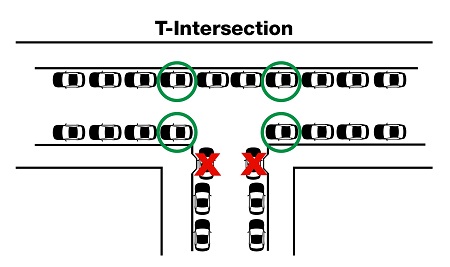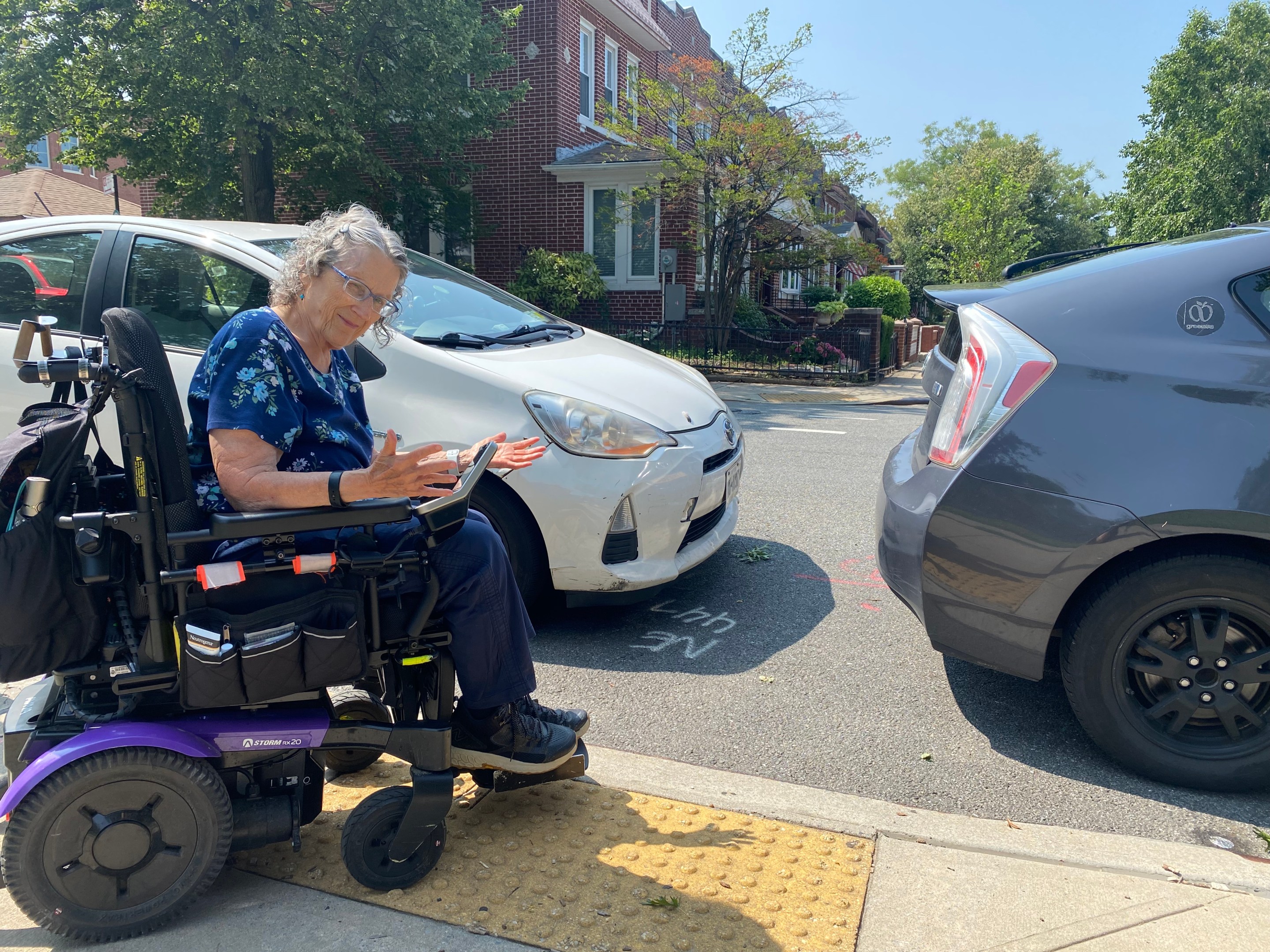The city wants to reverse a 2009 policy that allows drivers to park in unmarked crosswalks at T-intersections, undoing a decade-and-a-half giveaway to drivers that blocked pedestrian access and made streets less safe.
The Department of Transportation quietly proposed to remove the rule that has allowed drivers to park and block crosswalks at the three-way junctions—even if there are pedestrian ramps—as long as they weren’t marked, and there wasn’t a traffic light or all-way stop signs, according to a May 23 notice.
DOT declined to give a timeline for when the rule change will take effect, but the agency will host a virtual hearing about it in early September.
Parking in front of ramps in unmarked crosswalks at regular intersections is not technically allowed under state traffic laws, but the DOT codified the loophole for T-intersections after a push by then-Council Member Vincent Gentile, whose Bay Ridge district has many of those setups at streets ending at the waterfront and neighborhood parks.
Disability and street safety advocates praised the agency removing the policy, saying it made city streets less safe and accessible for people who use mobility devices or who are pushing strollers.
"They’re finally reversing that? Oh yay!" said Jean Ryan, a longtime Bay Ridge resident and the president of the civil rights group Disabled in Action.

Ryan, who is 78, relies on a wheelchair to get around, and the loophole has routinely enabled drivers to block her from crossing the street, especially to get to the waterfront at Shore Road or to green spaces like Owl’s Head Park.
"People in Bay Ridge don’t want to give up their parking whatsoever and so they think it’s perfectly ok to block people with disabilities from using the pedestrian ramp," Ryan said.
The rule change will restore visibility to intersections by removing cars from blocking sight lines, also known as daylighting.
Last year, a motorist fatally struck a toddler crossing the street with her mom at a T-intersection in Staten Island, as a van parked at the corner blocked the sight lines for the turning SUV driver.
State law requires any intersection to be daylighted and clear of parked cars within 20 feet of a crosswalk, but New York City has overruled the provision and exempted itself from that law, keeping more road space for free parking.
DOT leaders have justified not following state law by claiming that removing vehicles near intersections without installing physical infrastructure allows drivers to make faster and more dangerous turns. Meanwhile, cities like Hoboken have implemented widespread daylighting and traffic violence plummeted.
A western Queens community board last month demanded the city follow the state's daylighting law, after a driver hit and killed a 7-year-old girl at an intersection where cars routinely parked right up in the crosswalk.
The DOT declined to say how many intersections and parking spots the 2009 carveout affected, but when officials implemented the exemption, Gentile boasted that it would open up "dozens" of new free storage spots for his car-owning constituents in the district. The ex-lawmaker also argued that it would increase safety by discouraging people from using the crossings that didn’t have lights or stop signs.
Advocates repeatedly slammed the Bloomberg-era policy as a handout to drivers at the expense of accessibility and safe streets, and the old arguments still don't hold water, according to experts.
"That’s total false logic," said Mike Lydon, an urban planner of the firm Street Plans. "We should be making every intersection safe and accessible."
"To require someone to walk or wheel themselves an extra one, two, three blocks is a pretty big affront to your dignity as a person living in the city," Lydon added.
When reached for comment by Streetsblog on Wednesday, Gentile was dismayed that the city was walking back his efforts, and he accused the DOT of waging a campaign of parking removal, along with other moves to reallocate curb space like Citi Bike docks or Open Restaurants, that he asserted will drive people out of the city.
"They really have a war on curbside parking," the former pol said. "It's just another aspect of this campaign to eliminate vehicle ownership, and that hurts everyday New Yorkers and, I hate to say, it's gonna encourage people to leave New York because they can’t deal with it."
An agency spokesperson stood behind the change.
"Daylighting intersections is a valuable tool when used correctly," said Mona Bruno in a statement. "This proposed change will enhance safety and accessibility for pedestrians by removing the distinction between unmarked crosswalks at regular and T-intersections where there is an existing pedestrian ramp."
The Department of Transportation will hold a virtual hearing on the rule change on Tuesday, September 5 at 10 a.m. Tune in via Zoom here.






